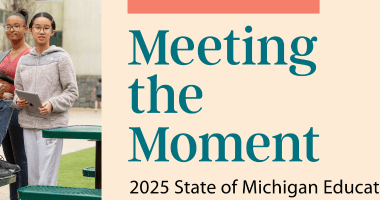Observing Hispanic Heritage Month
This week begins the celebration of Hispanic Heritage Month, which runs from Sept. 15 to Oct. 15. The annual observance is a time for “paying tribute to the generations of Hispanic Americans who have positively influenced and enriched our nation and society,” according to federal agencies marking the month with a variety of cultural, literary and historical events.
This year, Hispanic Heritage Month comes at a remarkable period in our country’s history. In recent months, we have seen hate-filled demonstrations in the streets of Charlottesville and cities across the country, we have witnessed anti-immigrant sentiment, and most recently, legal protections for the children of illegal immigrants from deportation from the only country that they have ever known.
But in addition to those recent issues, America’s Hispanic and Latino population faces numerous other long-term challenges, including and especially when it comes to educational achievement.
(Hispanic Heritage Month begins each year on September 15, the anniversary of independence of Costa Rica, El Salvador, Guatemala, Honduras and Nicaragua. Mexico, Chile and Belize also celebrate their independence days during the month. More than 55 million Americans, nearly a fifth of the population, are of Hispanic or Latino origin.)
At the Education Trust-Midwest, we advocate for the high academic achievement of all students – particularly those of color or living in poverty. And as our research and reports have documented, year after year, Latino students in Michigan face a huge achievement gap compared with other groups. And their proficiency levels are nowhere near where they need to be to go onto success in college or careers.
In just one example, results from the National Assessment of Education Progress show that Latino students in Michigan have fallen from 22nd in the country in 2003 to 33rd in 2015 in fourth-grade reading. In fourth-grade math, Latino students in Michigan fell from 16th in the country in 2003 to 43rd in 2015.
It is also important to celebrate important gains. “Over the past decade, the Hispanic high school dropout rate has declined and college enrollment has increased, even as Hispanics trail other groups in earning a bachelor’s degree,” according to a 2016 report from the Pew Research Center.
As college enrollment has improved, however, Hispanics students still lag other groups in obtaining a four-year degree, the report said: “As of 2014, among Hispanics ages 25 to 29, just 15 percent of Hispanics have a bachelor’s degree or higher. By comparison, among the same age group, about 41 percent of whites have a bachelor’s degree or higher (as do 22 percent of blacks and 63 percent of Asians).”
A few weeks ago, we posted a story about how Rudolfo Arellano, the grandfather of our executive director, Amber Arellano, came to the U.S. without a visa. He crossed the Texas border to escape vicious poverty and civil strife in his home state of Guanajuato, Mexico, and eventually earned his American citizenship for his service during World War II.
We need to find a better road that includes all Americans of every background on the journey to an inclusive America.
Today we need to recapture that spirit in our country. We especially need focus every single month throughout the year on the needs of historically underserved communities, including Hispanic and Latino students. That would really be something to celebrate during Hispanic Heritage Month.










